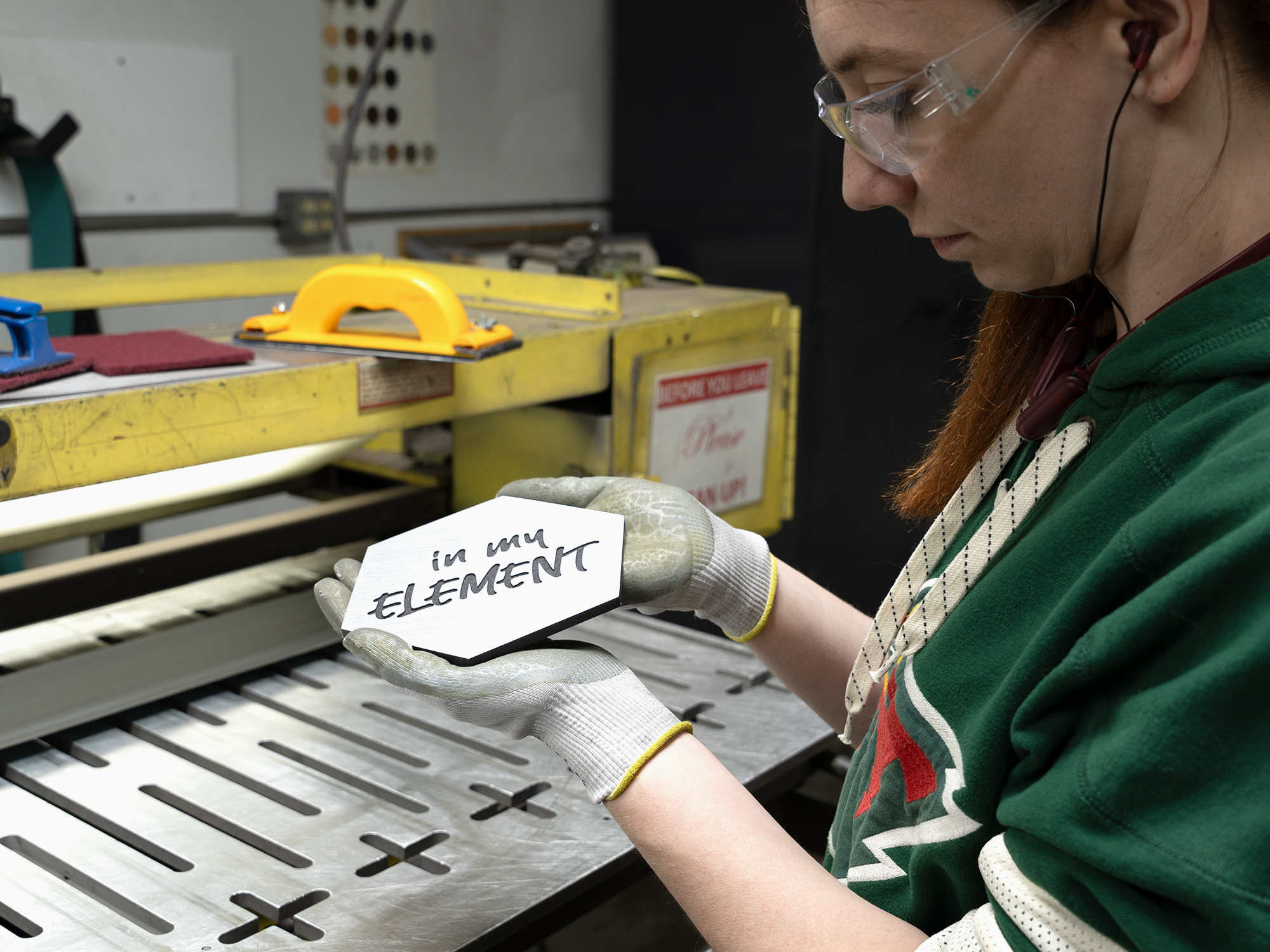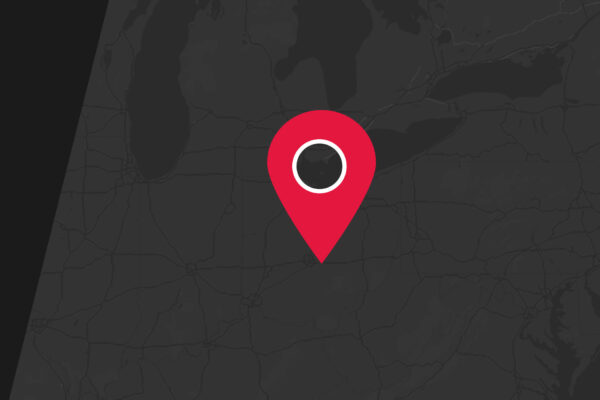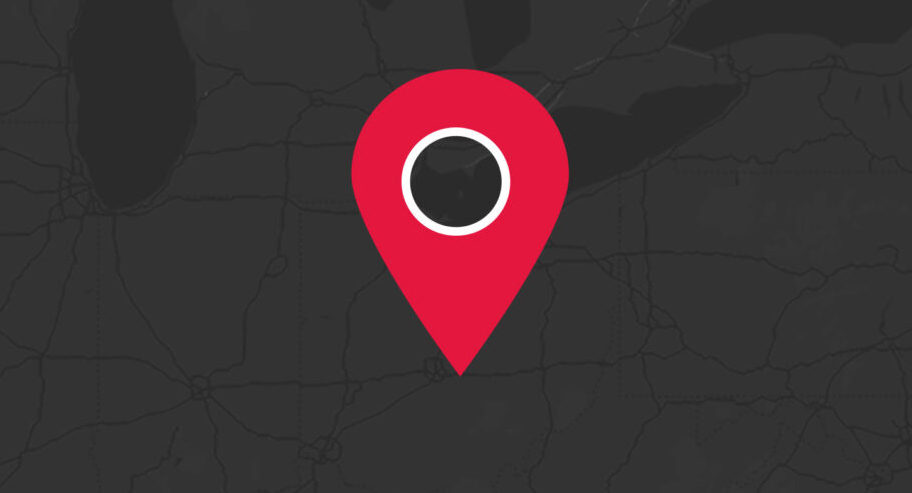Nurture creativity through curiosity
This guest blog is written by Mars Bravo from Signs from Mars.
I love learning random facts. I get a kick out of discovering items that were made for one purpose but evolved to serve a different function. Frisbees, for instance – they started as pie tin containers. And who would've thought bubble wrap was created for wallpaper before becoming a go-to for safe shipping? Imagine tossing a pie back and forth with your friends at the park or casually leaning against a wall covered in bubble wrap. Hilarious, right?
Take plaques for example. In the 1750s, American insurance companies issued metal plaques, also known as fire marks, to policyholders to show their protection against fire damage. These plaques displayed the insurer's name, a symbol, and sometimes the policy number on the outside of the building. It's fascinating how things effortlessly evolve. After all, change is constant. Even though plaques endure decades, they aren't exempt from change either.
I took the opportunity to partner with Gemini on a project. The goal of our work is to redefine what the sign industry can do with plaques using the technology and manufacturing capabilities available to us. Our partnership is to inspire other sign designers and makers to be curious about plaque sign design to move the industry forward.
Plaques Have a Long-Standing History
The origin of “plaque” is from the French word “plaque”, meaning “flat metal plate”. This definition still holds true, yet modern advancements allow us to design and manufacture plaques in different metals or from plastics such as acrylic.
Tracing back to the Sumerian and Early Bronze Age in 2400 BC, plaques had many purposes in ancient civilizations, including Egypt and Greece. Plaques were found inscribed with names of the deceased, tribute to athletes, or served as markers for important locations—functions that still resonate with the way we often use plaques to this day. A traditional application of plaques includes memorials and dedications, incorporating images such as portraits or symbols. Over the years, design elements of plaques have subtly evolved, with changes in materials and fonts, yet the formatting principles have remained unchanged. Plaques are often rectangular or in the shapes of ovals and circles, as these compositions have become ingrained in our design practices today.
I found myself curious to explore beyond these traditional constraints to find new ways of creative expression. With many technological advancements at our fingertips, such as laser cutters, CNC routers, large format printers, and other capabilities, we can revolutionize the production of plaques within days. I feel lucky to be in a time where I can vectorize artwork on the go with an iPad, using the extra time to view plaque design through a different lens.
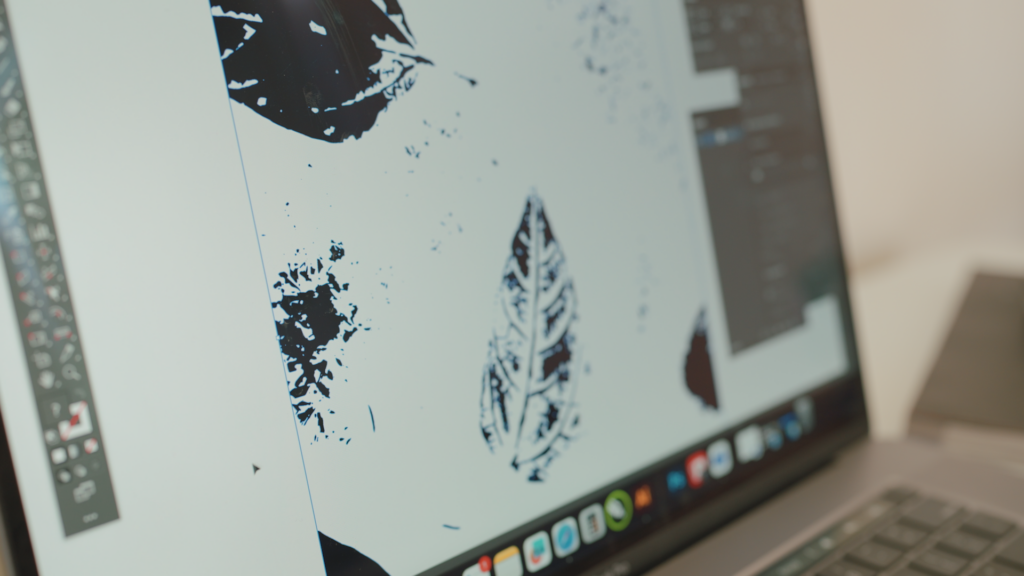
I notice potential contemporary uses of plaques, such as incorporating plaques into wayfinding signage to enhance or complement the aesthetics of their surroundings. And with the ability to paint or direct-print onto plaques with any color or intricate image, there is no one more excited about QR code integration into signage than me. They allow for a deeper exploration of information through smartphones, transcending the limitations of the physical space available in a plaque. As a fan of random facts, this adds a powerful dimension to the functionality of personalized signage.
Navigating the Potential in Plaque Sign Design
Motivated by the desire to redefine what plaques can do for sign makers, designers, and businesses, the opportunity to partner with Gemini Inc. made perfect sense. What better way to leverage their 60-year manufacturing experience, equipment, and capabilities than to join forces? Our goal was to breathe new life into the concept of plaques, offering fresh ideas to seasoned and emerging sign designers and sign makers while maintaining the quality and inherent durability of plaques.
While exploring some of Gemini’s materials and sign products, like their popular Flat Cut Metal signage, I designed five plaques, each with a unique purpose to inspire and challenge our modern-day limitations. I truly believe that embracing risks is crucial for nurturing creativity. By daring to push boundaries, we engage our problem-solving skills, identify patterns, and welcome change into our sign industry. I have heard the saying, “If it ain’t broke, don’t fix it” so many times, but what if “it” is not broken just uninspiring?
So how do I pay homage to the timeless qualities of a plaque while infusing enough creativity to make it visually distinct and new? Although it initially felt like a difficult task, I reminded myself that at its core, a plaque is essentially a flat metal plate. This led me to explore designing plaques based on the ancient Greek elements —earth, water, air, and fire. I learned that among Greek philosophers, discussions revolved around identifying the arche, known as, the first principle, the fundamental element from which all else originated. My initial inspiration came from one of my favorite rock bands, Thrice, and their album The Alchemy Index Vols. I – IV. I felt compelled to acknowledge the simple, essential elements that sustain our existence.
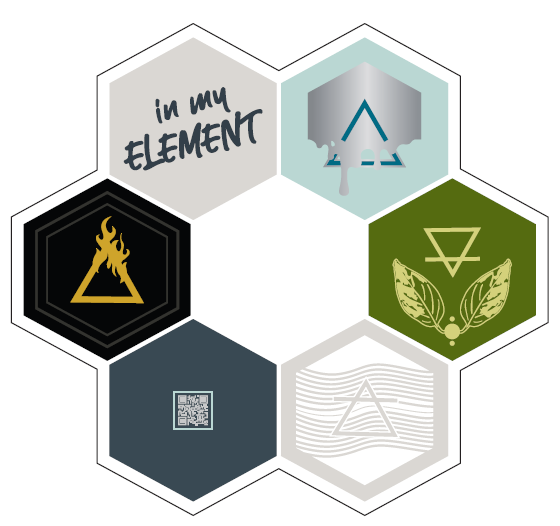
With professional guidance from Gemini, I strategically used materials to represent these elements. For instance, I choose polished aluminum to symbolize water, its mirror finish creating the illusion of wetness. On the other hand, Gemini’s chemically oxidized bronze, with its ashy, dark finish, became part of my choice for representing fire. I made a conscious effort to avoid predictable standard plaque shapes in these designs. This decision was not only to fully credit Gemini’s capability for contour cutting but also to demonstrate that a plaque does not always have to be confined to rectangular compositions.
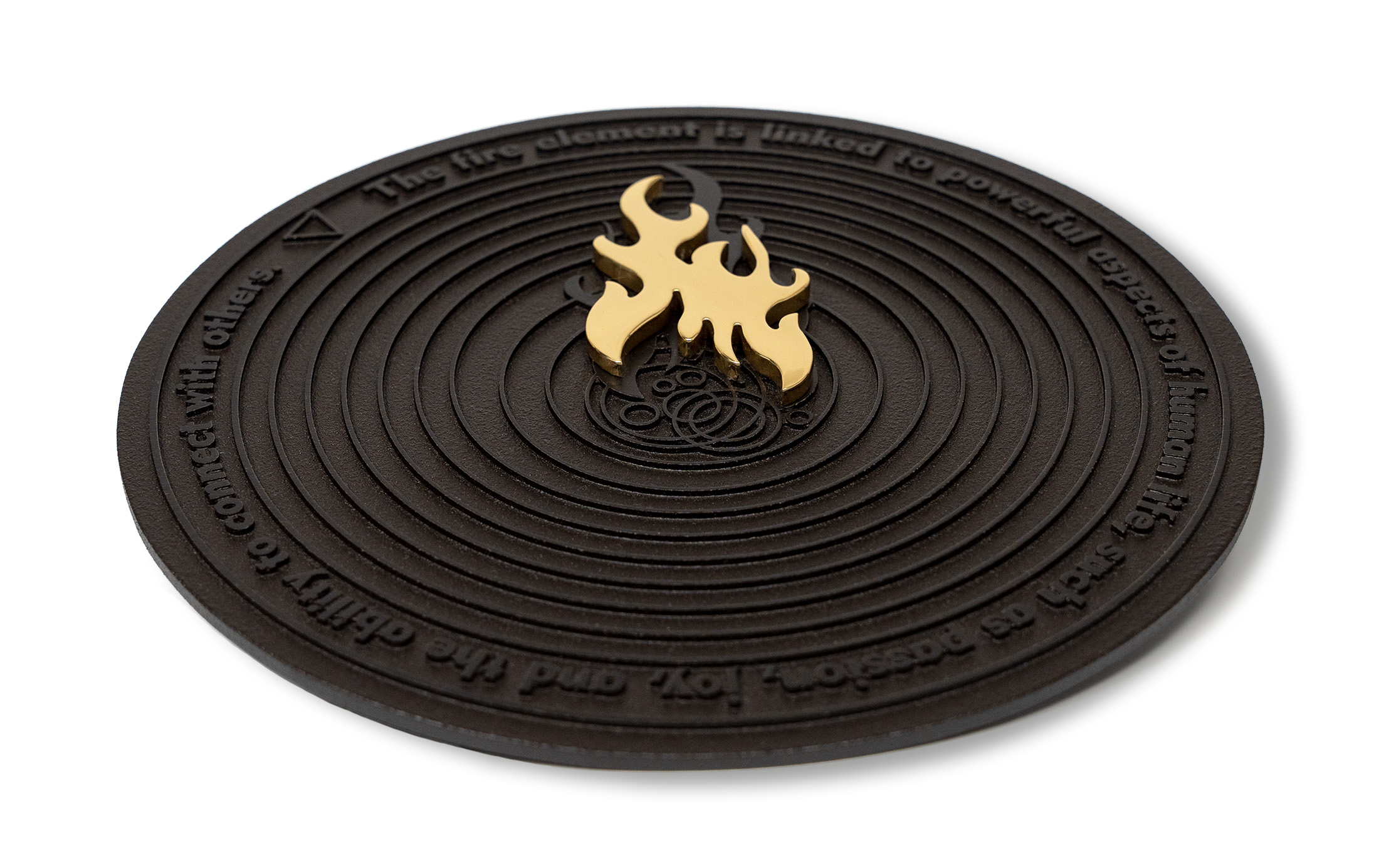

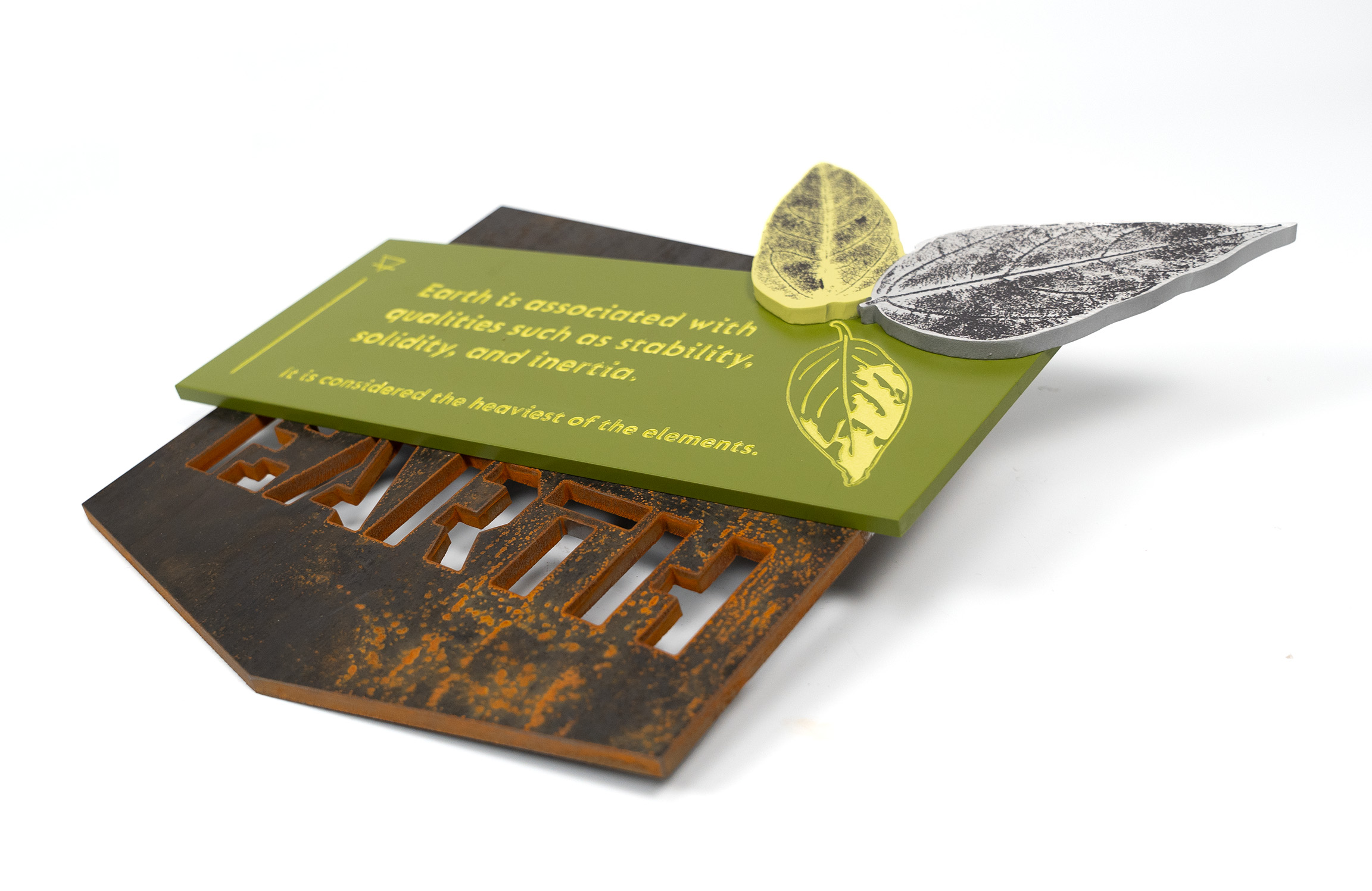
Utilizing Gemini’s Precision Tooled Plaques, also known as tooled or milled plaques, was my optimal product choice for these designs because they deliver sharp, precise details without jeopardizing signature, intricate elements.
Gemini offers a plethora of metal finishes, yet my preference leaned toward aluminum. I chose this material because it’s lightweight and it’s flexible and affordable. Additionally, I repeatedly used aluminum to ensure the plaque designs sustained a cohesive union to curate a harmonious collection. As a sign designer, my self-imposed challenge was to give these flat surfaces the appearance of depth. Inspired by rock music, I wanted the plaques to exude a sense of fun and dynamic energy. Leveraging Gemini’s flat cut metal capabilities, I added extra elements onto the precision tooled plaques, showcasing our freedom to mix and match available resources. I played with skewed angles on the text and utilized the finest lines possible to maintain a hand-drawn spirit, aligning with my design style. This method helps build the foundation for a more organic, personalized finish versus a generic or overly computerized sign design.
Trying Different Approaches
One of the most enjoyable aspects of designing these plaques was tapping into my child-like curiosity. I collected dried leaves from my backyard, coated them with black acrylic paint, and created stamp-like prints. After scanning and vectorizing these images to obtain high-resolution artwork files, we used them to print directly onto our earth plaque design.
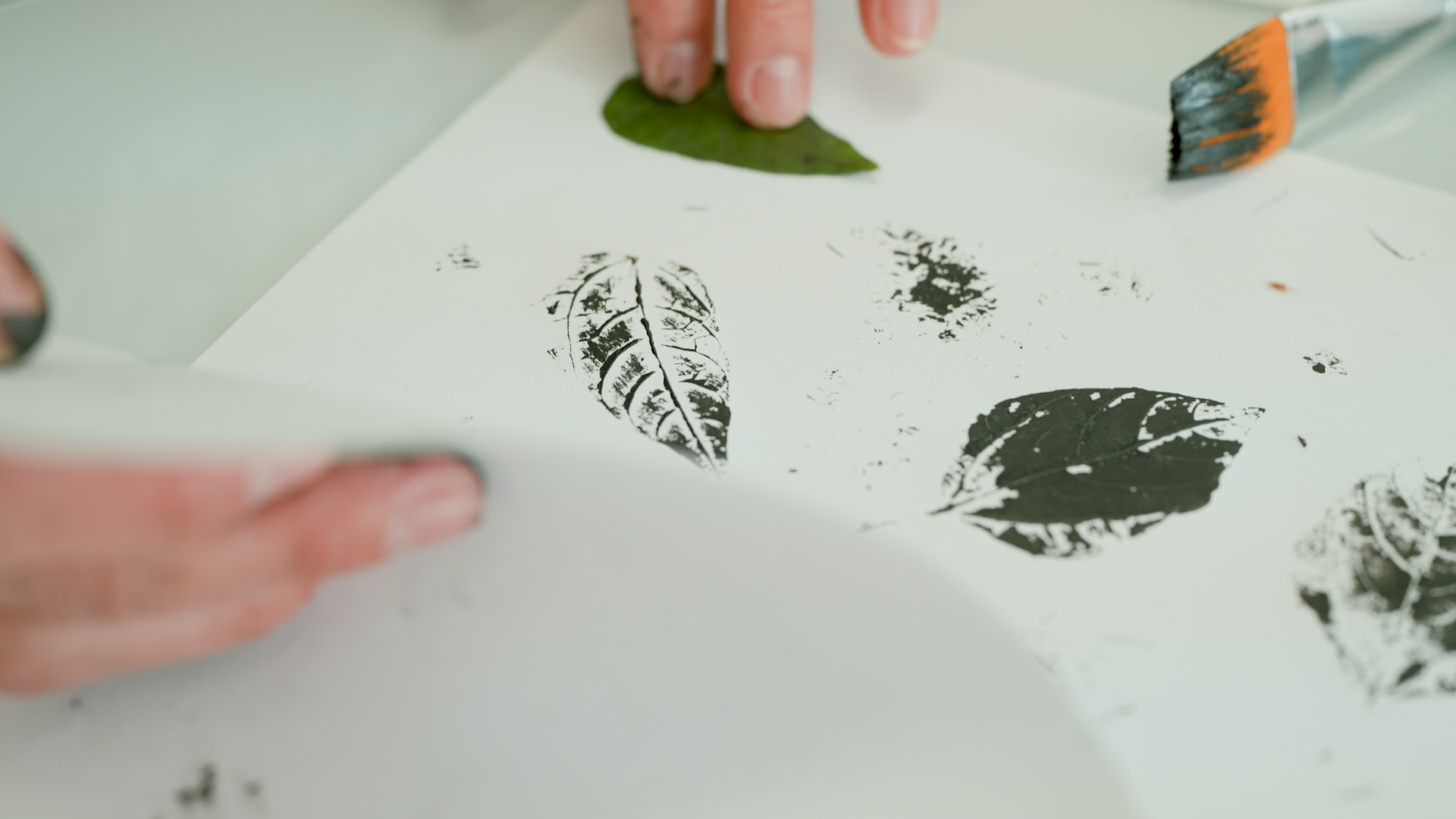
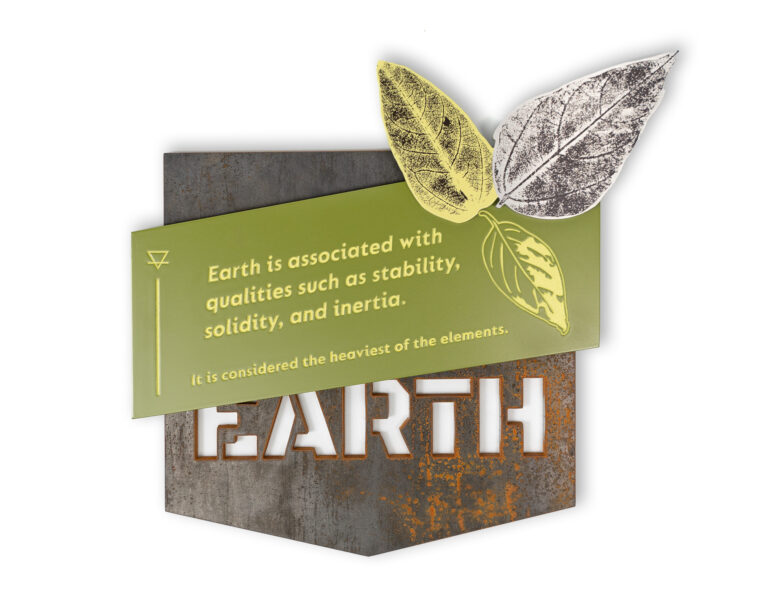
I'm utterly impressed with Gemini’s ability to preserve the detail on these small leaves through their direct printing services. As sign makers, we often recognize the impact that larger-scale signs instantly have, but it is crucial to acknowledge smaller-scale work, too. Small-scale work is challenging because it demands precision, time, and detail that cannot be overlooked, hidden, or underestimated.
Whether it's a substantial or a modest project, sign makers and sign designers should leverage technology and craftsmanship to ignite curiosity and creativity in their work. Embracing experimentation is key to ensuring the vitality and vibrancy of our sign industry, making it not just sustainable, but keeping it fun and unique.
When I reflect on the idea of the discovery of artifacts like plaques across various civilizations, it always amuses me. Perhaps there's something about the non-linear connection everything has to the past that sparks my fondness for random facts. How long can a plaque last? A lifetime. When I teamed up with Gemini, I noticed that we shared a similar commitment to maintaining high-quality standards. This observation brought me an immediate sense of peace, trust, and reliability. I can't help but envision a movie plot where everything has transitioned into the digital world, and someone, somewhere stumbles upon our Earth, Water, Air, and Fire plaques, found perfectly preserved displaying the arche, the first principle.
About Mars
Mars Bravo, owner of Signs from Mars in Culver City, CA, is a visionary sign designer driven by her passion for innovative signage solutions. Combining creativity and purpose, she advocates for education and beautification in the sign industry. Mars's journey in design and entrepreneurship led her to establish herself as a significant presence in the field. As the driving force behind her business, she transforms ordinary spaces into extraordinary ones through artistic signage, pushing the boundaries of conventional design. Mars actively engages in initiatives that inspire and uplift people, aiming to create not just signs but narratives that resonate with people on a deeper level.


